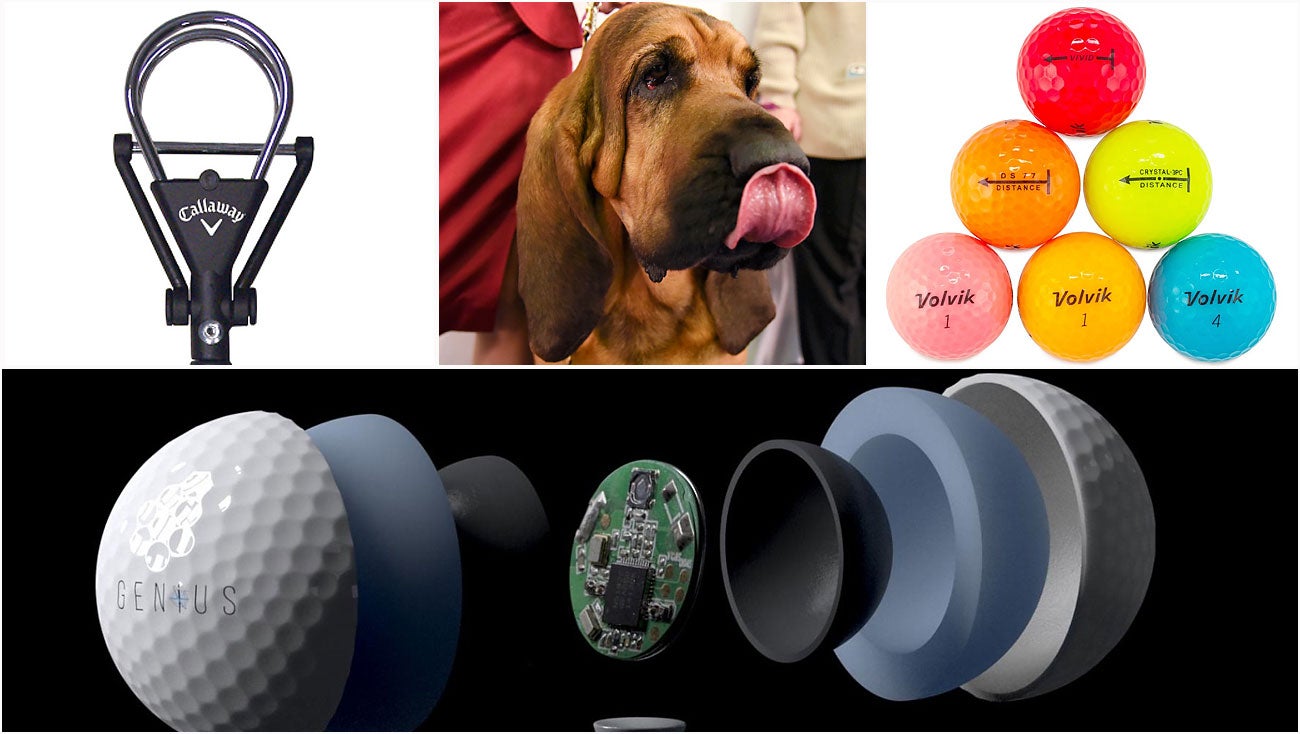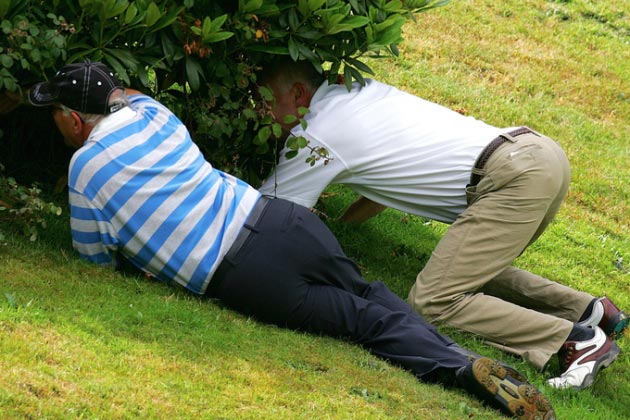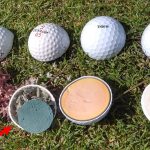To find golf balls, search areas near water hazards, trees, and tall grass. Check lost ball bins at golf courses.
Golf balls can be expensive, so finding lost ones can save money. Many players lose balls in tricky spots. Popular search areas include water hazards, dense trees, and tall grass. These locations often hide numerous golf balls. Another great place to look is in lost ball bins at golf courses.
These bins contain balls found by course staff or other players. Searching during off-peak times can increase your chances. Always ask for permission before searching on private property. With a bit of effort, you can build a collection of quality golf balls at little to no cost.

Credit: golf.com
Introduction To Golf Ball Hunting
Golf ball hunting is an exciting and rewarding activity. Many golfers enjoy searching for lost balls. It can save money and provide unique finds.
Why It Matters
Finding golf balls can save you a lot of money. Golf balls are expensive, and finding lost ones helps reduce costs. Also, it helps keep golf courses clean and tidy.
Environmental Impact: Retrieving lost balls reduces waste and pollution. Many lost balls end up in lakes or forests. Finding them helps protect nature.
Quality: Some lost balls are in excellent condition. You might find premium brands in perfect shape.
Who Can Benefit
Anyone who enjoys golf can benefit from golf ball hunting. Here are some groups who might find it especially useful:
- Beginners: New golfers often lose more balls. Finding them can save beginners money.
- Frequent Players: Regular golfers can save by reusing found balls.
- Golf Course Staff: Staff members can keep the course tidy and find balls to sell or reuse.
- Environmentalists: People who care about the environment can help clean up courses.
| Group | Benefit |
|---|---|
| Beginners | Save money on new balls |
| Frequent Players | Reuse found balls |
| Golf Course Staff | Keep course tidy and find balls |
| Environmentalists | Help clean up courses |
Essential Gear For Finding Golf Balls
Finding lost golf balls can be fun and rewarding. With the right gear, you can make the process easier and more efficient. Below, we discuss the essential tools and clothing needed to make your golf ball hunting successful.
Tools You Need
Having the right tools can make a big difference. Here are some must-have items:
- Golf Ball Retriever: A long pole with a scoop to reach distant balls.
- Mesh Bag: Carry multiple balls easily. Mesh allows for quick drying.
- Flashlight: Helps you find balls in dim light or shadows.
- Magnet: Some balls have metal cores. A magnet can help find them.
Clothing And Accessories
Wearing the right clothes can make your search more comfortable. Consider the following:
- Waterproof Shoes: Often, golf balls end up in wet areas.
- Gloves: Protect your hands from thorns and sharp objects.
- Hat: Shield your eyes from the sun.
- Lightweight Jacket: Good for cool or rainy days.
With the right gear, finding golf balls can be a breeze. Equip yourself properly to make the most of your search.
Best Locations To Search
Looking for golf balls can be a fun and rewarding activity. Knowing the best locations to search can make your efforts more fruitful. Below are some top places to find golf balls.
Golf Courses
Golf courses are the prime spots to find lost golf balls. Players often lose balls in rough areas and woods. Walk along the rough and near the tree lines. Check around bunkers and tall grass. These places are where most balls go missing.
Ask the course manager for permission first. Some courses may have rules about collecting balls. Respect these rules to avoid any trouble.
Driving Ranges
Driving ranges are another great place to search. People hit many balls, and some go beyond the range. Look in the areas behind the nets or fences. These places often have many lost balls.
Just like golf courses, ask for permission before searching. Many driving ranges collect and reuse their balls.
Water Hazards
Water hazards can be gold mines for finding golf balls. Many players hit balls into ponds and lakes. Use a ball retriever to scoop them out. Water hazards on golf courses often have many lost balls.
Be careful when searching in water hazards. Ensure your safety and avoid deep water. Wear proper footwear to prevent slipping.
Effective Search Techniques
Finding lost golf balls can be a challenging task. Using effective search techniques saves time and effort. Here are some proven methods to help you locate golf balls quickly and efficiently.
Scanning The Ground
One effective technique is scanning the ground. Walk slowly and keep your eyes low. Look for white or colored objects. Golf balls often get buried in grass or dirt. Look under bushes and trees.
- Walk in a zigzag pattern.
- Check around the greens and fairways.
- Look in sand traps and water hazards.
Use a golf ball retriever for hard-to-reach places. It can extend your reach and help you find balls in water or dense brush.
Using Technology
Technology can assist you in finding lost golf balls. Some tools and devices can make the search easier.
| Tool | Function |
|---|---|
| GPS Devices | Tracks the location of your shots. |
| Range Finders | Measures distances and helps locate balls. |
| Ball Finders | Specialized devices that locate buried balls. |
Using a combination of these tools can enhance your search efficiency. GPS devices can help you remember the direction of your shots. Range finders can help you measure distances accurately. Ball finders are specifically designed to locate hidden balls..
Safety Tips And Precautions
Finding golf balls can be an enjoyable and rewarding activity. But it’s important to prioritize safety. Let’s explore some essential safety tips and precautions.
Avoiding Hazards
When searching for golf balls, always watch out for hazards. Look out for water bodies, sand traps, and uneven terrain. Wear proper footwear to avoid slips and falls.
- Stay away from steep slopes to prevent accidents.
- Be cautious around water hazards to avoid slipping.
- Watch for wildlife that may pose a threat.
Respecting Private Property
Respecting private property is crucial while hunting for golf balls. Never trespass on private property without permission. Always seek consent from the property owner first.
- Ask for permission if entering private land.
- Avoid restricted areas marked with signs.
- Be respectful and leave no trace behind.
| Do | Don’t |
|---|---|
| Wear proper footwear | Enter private property without permission |
| Stay alert | Ignore warning signs |
| Respect wildlife | Disturb natural habitats |

Credit: golfballfinder.com
Cleaning And Sorting Found Golf Balls
Finding lost golf balls is exciting. They can be reused or sold. But, cleaning and sorting them is important. Clean golf balls perform better. Sorting ensures you use the best ones.
Washing Methods
There are many ways to clean golf balls. Some methods work better than others. Below are a few effective ways:
- Soapy Water: Fill a bucket with warm water. Add dish soap. Soak the balls for 30 minutes. Use a brush to scrub off dirt.
- Vinegar and Water: Mix equal parts of vinegar and water. Soak the balls for an hour. Rinse them well.
- Baking Soda Paste: Make a paste with baking soda and water. Apply to the balls. Scrub with a brush.
Grading Quality
After cleaning, grading the golf balls is next. This helps in identifying the best ones. Grading can be done in three main categories:
| Grade | Description |
|---|---|
| Mint | Like new, no scratches or marks. |
| Good | Minor marks or scuffs, still playable. |
| Practice | Visible damage, best for practice only. |
Sorting golf balls by quality helps. You can use the best ones for games. The lower quality ones are good for practice. This way, you get the most out of your found golf balls.
Environmental Impact
Golf balls can have a significant impact on the environment. They often end up in lakes, woods, and other natural areas. This causes harm to wildlife and contributes to pollution. Finding and recycling golf balls can help reduce this impact.
Reducing Waste
Many lost golf balls are never found. They contribute to environmental waste. By finding golf balls, you help reduce waste. This keeps courses and natural areas cleaner.
Here are some tips to help reduce waste:
- Use a ball retriever to collect lost balls.
- Participate in golf ball recycling programs.
- Encourage others to pick up found balls.
Every ball found and reused is one less ball in the environment. This simple act can make a big difference.
Supporting Sustainability
Finding golf balls supports sustainability efforts. It reduces the need to produce new golf balls. This saves resources and energy.
Here are some benefits of supporting sustainability:
| Benefit | Description |
|---|---|
| Resource Conservation | Less demand for raw materials. |
| Energy Savings | Reduced energy used in manufacturing. |
| Wildlife Protection | Less pollution in natural habitats. |
By finding and reusing golf balls, you support these benefits. You play a part in creating a more sustainable world. Small actions can lead to significant changes.
Turning Found Golf Balls Into Profit
Turning found golf balls into profit can be a fun and rewarding hobby. Whether you sell online or in local markets, there are many ways to make money.
Selling Online
Selling golf balls online can reach many buyers. Here’s a step-by-step guide:
- Clean and sort the golf balls by brand and condition.
- Take clear photos of the golf balls in good lighting.
- Create descriptive listings on popular platforms like eBay or Amazon.
- Set a competitive price based on condition and brand.
- Offer fast shipping to attract more buyers.
Below is a table of popular online platforms and their features:
| Platform | Features |
|---|---|
| eBay | Auction and buy-it-now options |
| Amazon | Large customer base |
| Facebook Marketplace | Local and national sales |
Local Markets
Local markets are great for selling found golf balls quickly. Here are some tips:
- Check out local flea markets and garage sales.
- Set up a table or booth to display the golf balls.
- Use signs and banners to attract customers.
- Offer bundle deals to increase sales.
- Network with other sellers and buyers to build connections.
Turning found golf balls into profit can be simple and enjoyable. Follow these tips to start earning today!
Conclusion And Final Thoughts
Finding golf balls can be a fun and rewarding activity. This guide provides tips and tricks to help you locate those elusive golf balls. Let’s sum up what we’ve learned and inspire you to start your search.
Recap Of Key Points
- Choose the right locations: Look near water hazards, roughs, and wooded areas.
- Use tools: Ball retrievers and magnets can be very helpful.
- Be patient and observant: Pay attention to likely hiding spots.
- Go at the right time: Early mornings or late evenings are best.
- Respect private property: Always ask for permission if needed.
Encouragement To Start Searching
Now that you know where and how to look, it’s time to start searching. Finding lost golf balls can be a great way to enjoy nature and improve your game. Happy hunting!

Credit: m.youtube.com
Frequently Asked Questions
What Is The Easiest Way To Find A Golf Ball?
The easiest way to find a golf ball is to watch its trajectory closely. Use landmarks for reference points.
How Do I Find My Lost Golf Balls?
Use a golf ball finder app or retrace your steps. Check tall grass, bushes, and water hazards. Ask fellow golfers for help.
How To Always Find Your Golf Ball?
Use bright-colored golf balls for easy visibility. Track the ball’s flight path closely. Mark landmarks near the landing area. Use a rangefinder or GPS. Practice focused and consistent ball-watching techniques.
How To See Golf Balls At Night?
Use glow-in-the-dark golf balls for better visibility. Attach LED lights to your golf clubs. Carry a flashlight or headlamp.
Conclusion
Finding golf balls can be an enjoyable and rewarding activity. Use these tips to improve your search success. Remember to check common hiding spots and stay vigilant on the course. With persistence, you’ll soon have a plentiful supply of golf balls.
Happy hunting and enjoy your game!





